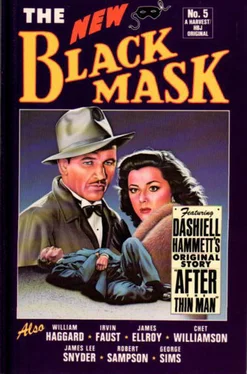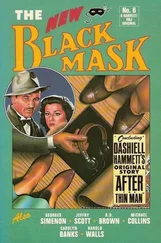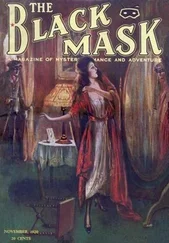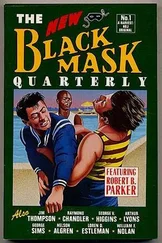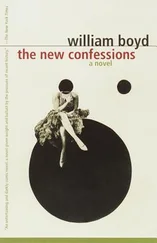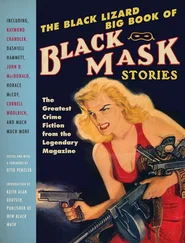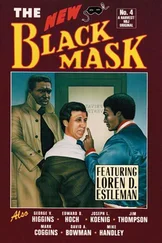William Haggard - The New Black Mask (No 5)
Здесь есть возможность читать онлайн «William Haggard - The New Black Mask (No 5)» весь текст электронной книги совершенно бесплатно (целиком полную версию без сокращений). В некоторых случаях можно слушать аудио, скачать через торрент в формате fb2 и присутствует краткое содержание. Год выпуска: 1986, ISBN: 1986, Издательство: A Harvest/HJB book Harcourt Brace Jovanovich, Жанр: Детектив, на английском языке. Описание произведения, (предисловие) а так же отзывы посетителей доступны на портале библиотеки ЛибКат.
- Название:The New Black Mask (No 5)
- Автор:
- Издательство:A Harvest/HJB book Harcourt Brace Jovanovich
- Жанр:
- Год:1986
- ISBN:9780156654845
- Рейтинг книги:4 / 5. Голосов: 1
-
Избранное:Добавить в избранное
- Отзывы:
-
Ваша оценка:
- 80
- 1
- 2
- 3
- 4
- 5
The New Black Mask (No 5): краткое содержание, описание и аннотация
Предлагаем к чтению аннотацию, описание, краткое содержание или предисловие (зависит от того, что написал сам автор книги «The New Black Mask (No 5)»). Если вы не нашли необходимую информацию о книге — напишите в комментариях, мы постараемся отыскать её.
The New Black Mask (No 5) — читать онлайн бесплатно полную книгу (весь текст) целиком
Ниже представлен текст книги, разбитый по страницам. Система сохранения места последней прочитанной страницы, позволяет с удобством читать онлайн бесплатно книгу «The New Black Mask (No 5)», без необходимости каждый раз заново искать на чём Вы остановились. Поставьте закладку, и сможете в любой момент перейти на страницу, на которой закончили чтение.
Интервал:
Закладка:
Click.
In those two shots Mr. Ito has caught the splendid combination of place and symbol, and no one, least of all the all-knowing expert, Mr. Kenzi Hayoko, who works beside him in the linen factory, can gainsay that fact. Mr. Ito has, indeed, in those shots, juxtaposed a magnificent and solemn resting place, containing a certifiable hero, beside a restless counterpoint that is known variably as Gotham, Baghdad-on-the-Subway, or most accurately, the greatest of Apples.
And something else…
As if to add an exclamation point to the proceedings, there we have a neat little plus. There, just on the top step of the Tomb. A small, sharp-boned Negro, who has cut himself out of the hallowed interior and is gazing at the roughness, the toughness, the coolness of the Apple.
Indeed, as luck, or Mr. Ito’s pictorial instinct would have it, the symbolic little chap is lounging quite innocently, in fact with a prototype nonchalance, beneath the beautiful words of the general: “LET US HAVE PEACE.” And hard by the rather bitter exclamation: “CRASH/SLASH/SMASH!”
To be quite blunt about it, the scene is delightfully heavy.
As he presses the camera button, Mr. Ito catches himself. “Negro,” or even “colored man,” as denoted within the Tomb, is out of fashion today; the chap in the doorway is a black man, or, simply, a black, and he must bear that in mind. For the excellent lens has zoomed up and is doing its work as well as ever, and from this careful distance on the wide approach, Mr. Ito can make out every carved-in line of the sad, dignified face, and that includes a scar that runs from beneath the left eye down to the firm but vulnerable chops.
Having recorded that map of wounded history, Mr. Ito moves to the other side of the walkway. He squints at his subject, who has turned and is gazing back to the dark mustiness of his liberating war. At that moment Mr. Ito’s lengthy and careful research in Matsumae and Sapporo floods into his head: Mr. Catton’s depictions of the struggle; the novels of C. Van Vechten who never met a “negro” he did not like; the recordings of Satchelmouth, of Cab, of the King, the Duke, the Count, and more recently the Prince; the lives of J. Johnson, J. Louis, and Ali the Great. All of that and much more run and gambol about the magnetic black, and as they do, there is another click, an internal one. For a name has entered the receptive head of the photographer-who-has-prepared.
Mr. Ito smiles to himself, quickly removes the smile. But within his head, where research and practical experience interconnect, he continues to smile. Why not? The name born of that splendidly cool interconnection is perfect. As perfect as the face, the history, and the attitude of the little symbol.
Sugar.
Or, in moments of formality, Sugar Man.
It is an all-encompassing name. A proud and linking name. Reaching back to the stand-up geniuses of the prize ring, the double Sugars, Robinson and Leonard. But also a name that comments on itself, emerging as it does out of the native preoccupation with sweeteners, real and phony, and a name that captures another preoccupation, which quite frankly is money. As in bread, as in dough. As in Sugar. Click.
Mr. Ito (casually) swivels away. One must not be too obvious. There are other scenes that should flesh out the series, that can give it existential pizzazz. Thus he frames and snaps the Hudson as it rushes down to the sea, the very waters that carried Sugar’s forebears here in the infamous middle passage, the very waters that carried here the forebears of the general who saved him. He also snaps tall, stiff New Jersey, gazing wistfully at pulsating Gotham. He moves slowly back to the walkway and focuses on a chunky man in a yellow and blue polo shirt. There is chunkiness all over, but it is especially pronounced in the lower gut, where it bulges out like a basketball. Another research click: the man is the. perfect incarnation of the Cab Calloway chap, the one who measures five feet in all directions, or quite simply, one of those big, fat, solid boys, solid avoirdupois.
There is something else about the man. He wears a face of smiling weariness. Mr. Ito has seen a great deal of that face, as if its owner were hugely annoyed with his lot but has decided after many years of experience to treat it with a rueful disdain. The face, the corpus, are worth three pictures.
And then the camera swings to Sugar.
He is walking down the steps of the general’s tomb. Ah. Once again, the sharp edge of interconnecting delight. This is turning into the best day since the morning in San Antonio when the Chicano lad smashed a bottle of beer against the Alamo.
Sugar is not merely walking; he is limping. Mr. Ito, not wishing in any way to embarrass his splendid subject, drops the camera to his right hip, glances expertly down, and snaps three versions of the limp. As he does, his busy and well-stocked mind zooms back to the little chap’s early years. Hard, grinding years. Years, however, when he strode about strongly and smoothly. He had to, for he was one of twelve to fourteen children working the cotton fields of Alabama. Alongside sister B. McQueen; brother S. Life, who was constantly in difficulty with overseer B. Connor; and cousin K. Fish, who talked big but rarely acted. Sugar was a good worker, a hard worker, and he toiled behind his mask of pain from dawn until dark. But behind that neutral face lurked a brain, and in time that brain reached a dead-end conclusion. It decided that there was no future, no fulfillment, in such work. A parallel conclusion, by the way, to the one reached by Mr. Ito's grandfather in the copper mines of Wakkanai. All reached a climax on the day that the Northern Express came through and whistled, as it often did. However, this time the whistle was direct and quite personal, like the tales of Uncle Remus. Sugar looked up. Zip-a-dee-doo-dah. He found himself running. He found himself climbing. He found himself in a car with six other boys who introduced themselves as Scott. And they, and he, were on their way to a new world and a new life. Yes, a hard one, it is true, in the stone fields of the city, but one that gave you a chance to come smiling through. The way that Grandfather came through on leaving the mines. The way that the mighty Brown Bomber came through when he fled north to forge a new life against the anvil of the city of Mr. Ford, Mr. Chrysler, Mr. T. R. Cobb.
The scene has been inscribed. Mr. Ito leaps nimbly back to the present. He and his lens, still at his hip, track Sugar as he hobbles past the man who measures no more from head to toe than he does from side to side. Some ten feet beyond, Sugar stops. His powerful face is plunged into thought. Slowly he turns. Slowly he limps back to the man, stops. Well, now. They know each other. Right hands meet in the raised, slapping handshake. The greeting is recorded twice, now with the camera pressed against an eager cheekbone. The two men speak, and it is clear, even from a distance, that they are easy with each other. The jive spills out smoothly: change in the weather, change in the scene; difficulties with my wheels; worse difficulties with my chicks; R. Jackson unable to purchase a hit. And the raised hands keep slapping.
Mr. Ito pauses to reload, and as he does he considers. These two seem overly friendly. Even for Americans. Even for Rotarians. Even for a Van Vechten white exhibiting his rapport with a black. They really should not be this friendly.
Unless…
The film is inserted. Six shots ripple away beneath a happy finger. Mr. Hayoko had insisted that it was all Chinese propaganda, but here it is. All wool and many yards wide.
A transaction.
Clickclickclickclick.
With that fourth shot, Mr. Ito knows with a dead certainty who the fat man is. That is, given the circumstances that have brought the two of them here, who he must be. There are reels and pages of evidence: the Scarface, the Little Caesar, the Godfather. Lucky, Lepke, Baby Face, Mad Dog. Kid Twist, Bugsy, the French Connection. The round little fellow can be but one person: The Dutchman.
Читать дальшеИнтервал:
Закладка:
Похожие книги на «The New Black Mask (No 5)»
Представляем Вашему вниманию похожие книги на «The New Black Mask (No 5)» списком для выбора. Мы отобрали схожую по названию и смыслу литературу в надежде предоставить читателям больше вариантов отыскать новые, интересные, ещё непрочитанные произведения.
Обсуждение, отзывы о книге «The New Black Mask (No 5)» и просто собственные мнения читателей. Оставьте ваши комментарии, напишите, что Вы думаете о произведении, его смысле или главных героях. Укажите что конкретно понравилось, а что нет, и почему Вы так считаете.
